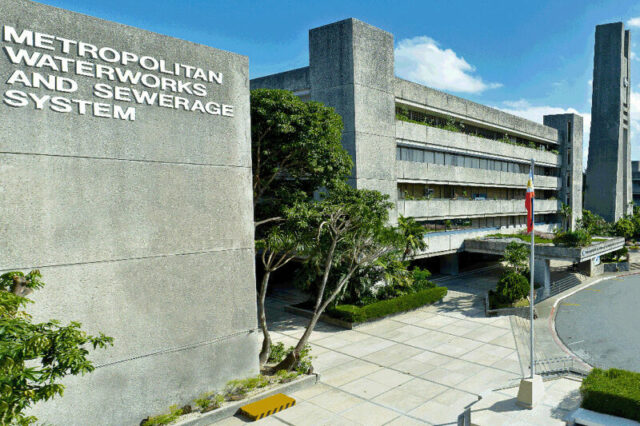IN 1960, director Roger Corman fulfilled a dare to make a film in two days by coming up with the black-and-white horror comedy Little Shop of Horrors. That short span of time gave birth to an iconic quirky world where a Skid Row flower shop raises a strange carnivorous plant.
It was later adapted into an Off-Broadway show, with music by Alan Menken and lyrics by Howard Ashman (a duo known for their work with Disney). But it really achieved worldwide success when it was turned into a musical film in 1986.
The story follows Seymour Krelborn, a down-on-his-luck flower shop assistant, who discovers a mysterious plant with an insatiable appetite for human blood. As the plant, named Audrey II, grows and gains fame, Seymour finds himself tangled in a web of love and moral dilemmas.
Theater director Toff De Venecia believes it’s about time to revisit this unique story, which The Sandbox Collective was supposed to do in 2020, but which was derailed when the pandemic hit.
“I’m so happy that this finally happened. I got to direct this musical in 2011 for Ateneo Blue Repertory, and it was very special to me because, while I was sort of familiar with it, I didn’t realize just how beautiful this musical was. In that show I discovered my voice as a theater director, that I have an affinity for absurdist works and themes of grief. For this 2024 version, we wanted to retain a lot of that spirit and essence, but of course on a bigger scale,” said Mr. De Venecia at a June 5 press conference for the musical.
The very first time he saw the show was in 2004, when Repertory Philippines staged it at Onstage Greenbelt. A few weeks after being awestruck by the musical, his sister died in a house fire.
“It was then that I pondered a lot about death, grief, and the absurdity of the world that we live in, and somehow that made its way into the kind of stuff we choose for Sandbox and the kind of material that we gravitate to,” he said.
Little Shop of Horrors, opening in July, is part of The Sandbox Collective’s 10th anniversary season. The audience can expect to hear memorable songs such as “Suddenly, Seymour” and “Somewhere That’s Green,” which have become iconic in the musical theater canon.
FULL CIRCLE MOMENTS
The cast will feature a mix of people who have done the musical before and those who will be working on it for the first time.
It features Reb Atadero and Nyoy Volante alternating in the role of the lovelorn Seymour, Sue Ramirez and Karylle Tatlonghari sharing the role of the unlucky-in-love heroine Audrey, Markki Stroem and David Ezra alternately playing the villainous dentist Orin, Audie Gemora as the flower shop proprietor Mr. Mushnik, and OJ Mariano as the bloodthirsty plant Audrey II. Mikee Baskiñas, Abi Sulit, Paula Paguio, and Julia Serad play the Street Urchins.
“We were more intentional about the text, the choices, and we just had more tools at our disposal to explore, to create a crazy surrealist playground for the actors to play in. I see myself more as an orchestrator than a director to the cast,” Mr. De Venecia said.
For Mr. Atadero, who was in the 2011 production, it was a no-brainer to take the chance to revisit the material.
“I was in high school at the time!” he said. “Coming from Rent, we’re fatigued and tired of course, but what carries us through is the amazing opportunity to be part of yet another iconic musical.”
Those familiar with the show can also expect to see something different visually this time around, according to scenographer Mio Infante.
“I actually did the set for the Little Shop of Horrors staged by Rep in 1989, my second professional show. I was also still in high school. So, it’s interesting to do something different with it after 35 years. You’ll see something unique for this one, a totally new take that you have to see for yourself,” he said.
One of the things to watch out for is the puppetry by Kayla Teodoro, known for her work in the West End in London. She’s one of the people on the team who are having a full circle moment in this production, having interned with The Sandbox Collective in 2014 before she became a professional puppeteer.
Musical director EJ Yatco reminisced on the use of minus ones in the 2011 production. “Now we’re going to do it with a live band. I’ve been dreaming about that for a decade. Toff and I have grown together, so our life experiences have prepared us for this version,” he said.
A STRONG CAST
Little Shop of Horrors is known for its quirky cast of characters, this time brought to life by faces old and new. Audrey, for example, is played by actresses who are known for their television work.
“I had to unlearn everything, everything. In theater you’re encouraged to make mistakes, unlike in TV where it’s fast-paced and you have to do things in one take. The rehearsals have been fun because we’ve all been making mistakes and improving as we go,” said Ms. Ramirez. This is her first stint in theater.
While she may be a newbie in this particular line of work, her voice wowed the audience at the short press preview. “I love singing and I’m learning a lot about theater, but I still have a lot more to go,” she said.
Ms. Tatlonghari, on the other hand, has had more experience, plus a lifelong obsession with the musical.
“I had a laser disc of Little Shop of Horrors back then. I always thought I was the only one who liked this show; I could even sing the whole thing from top to bottom! I later ended up liking Disney movies like The Little Mermaid, Aladdin, Beauty and the Beast, and it turns out the same musical genius duo of Howard Ashton and Alan Menken also did them,” she said.
Mr. Volante, who plays Seymour, noted that a lot of fellow actors from television are now excited to go into theater and vice versa.
“That’s a thing that’s happening now — people crossing over from one medium to the next. It’s something to encourage. Please support the shows because we want to see more of the entertainment industry coming together,” he said.
GEN Z SENSIBILITIES
In the villainous role of Orin are Markki Stroem and David Ezra, the latter coming from playing leading man-type roles in Disneyland. The two actors, each playing eight roles in the musical aside from Orin, observe that Gen Zs will resonate with the intelligent way the story tackles toxic relationships.
“The younger generation, in this day and age, have started to really call out abuse and red flags. This will definitely showcase that,” said Mr. Stroem.
More than anything, the cast is excited about adding another title to the many theatrical experiences lined up this year. Audie Gemora, who will take on Mr. Mushnik, invited everyone to watch as many shows as possible. “I’m happy because theater is so alive. I don’t know if you noticed but Gen Zs are so lucky. There are shows all year round, and they’re all selling very well!”
Mr. De Venecia added that the staging of Little Shop of Horror, now more intentionally, will lean into mental health as a theme.
“It wasn’t really a thing in 2011 when I did it last, even less so when the musical was first made. But there are actually lines from the show that say, ‘oh I’m depressed,’ showing depression as the status quo. There’s a lot of that, so we just really leaned into it a bit more, to make it a communal experience,” he said.
“That’s the ethos of Sandbox, now that we’re 10 years in the industry. We want to create a space where people can lean into this stuff.”
Little Shop of Horrors will run on weekends from July 6 to 28 at the Globe Auditorium, Maybank Performing Arts Theater, Bonifacio Global City, Taguig. There will be shows at 3 and 7:30 p.m. on Saturdays and Sundays, and 8 p.m. on Fridays. — Brontë H. Lacsamana

















